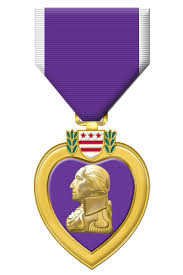Creating An American Highway System
Conceived in 1912, the Lincoln Highway, a 3,000-mile “patchwork” of existing roads, stretched from San Francisco to New York, and predated Route 66 by fourteen years. The Federal Aid Highway Act of 1921 did not provide funding for a transcontinental highway, but its intent to create a national highway system kept the idea of a coast-to-coast highway alive.
As more roadways began to criss-cross the United States, the Joint Board on Interstate Highways was appointed in 1925 by Howard M. Gore, U.S. Secretary of Agriculture, to create a numbering system for the highway network. A year later, Cyrus Avery, an Oklahoma businessman, founded the U.S. 66 Highway Association and coined the nickname “Main Street of America.” Avery also worked with Missourian John Woodruff to lobby for the creation of a highway that went from Chicago to Los Angeles.
A year later, the construction of Route 66 began, and a decade after that, thanks to Avery’s dogged lobbying, the route was fully paved.
Americans On The Move
Route 66 ran from Los Angeles to Chicago. It became a major thoroughfare for southwest trucking and connected hundreds of small towns for the first time. As these towns experienced new growth in the form of roadside eateries, hotels, and gas and auto shops, the route became more prominent in the American conscience. It gained more fame in 1939 with the publication of John Steinbeck’s novel The Grapes of Wrath, in which he dubbed Route 66 “the Mother Road.”
During the Great Depression and the accompanying Dust Bowl, 2.5 million people packed up their trucks and cars and left the Great Plains states in search of jobs and better lives. An estimated 400,000 of those migrants traveled Route 66 into California, while many others took the route north toward Chicago.
Route 66 Through Logan County
Besides evoking the freedom of the open road, Route 66 became a major highway for commerce between Los Angeles and Chicago, and all points in between. The most direct route to get the highway through Illinois took Highway 66 into Logan County, through the town of Lincoln. Economically, every town and city along the route benefited from the tourism initiated by the popularity of the road, and of course interstate trade was greatly eased all the way from Lake Michigan to the southern California coast.
Eventually, any well-traveled road falls apart, with the attendant potholes, cracks, and upheavals. New automobile technology and new technology for road construction made the older highways obsolete, especially after the Federal Aid Highway Act of 1956 launched the age of interstates. American motorists may have moved on, but many states are committed to maintaining their portions of the historic Route 66.
Today
Visitors to Logan County today can check out old Route 66 hotspots like the classic “Tropics” neon restaurant sign in Lincoln, the sign for the old Pig Hip Restaurant in Broadwell (the Pig Hip served a famous sandwich to motorists beginning in 1937), the Heritage Corner in Elkhart, or the the Route 66 Park, Museum, and Arcade Museum, all in Atlanta, IL.
Contact the Logan County Tourism Bureau to plan your visit or get more information!


